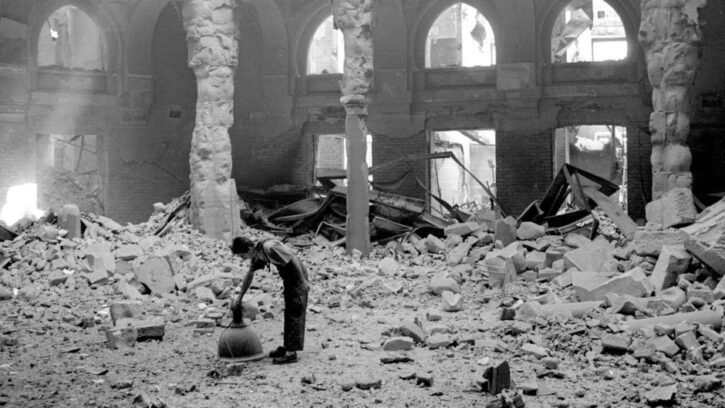
The reconstructed Sarajevo’s City Hall marked on Friday the 27th anniversary of the wartime destruction of the building which represents one of the most beautiful symbols of Bosnia’s rich history and stems from the time the Austro-Hungarian Empire ruled over the country.
The Sarajevo City Hall was opened on April 20, 1886, little after the Austro-Hungarian Empire took over Bosnia after the Ottomans left. Since then, it stood witness to Bosnia being part of the Kingdom of Serbs, Croats and Slovenes and then it survived WWII and saw the country becoming part of Yugoslavia.
It was, however, burnt down in the 1992-1995 war.
The building was first the seat of the city administration. Following WWII and until 1949, it served as the premises of the Sarajevo Court and the seat of Bosnia’s Parliament. It then became the National and University Library of Bosnia and Herzegovina.
The building was shelled several times between 1992 and 1995. It was set ablaze in August 1992.
The fire destroyed about 90percent of books and documents containing Bosnia’s history.
Reconstruction began in 1996, and the Library was opened again on May 9, 2014.
“Every year we get emotional,” said the director of the National and University Library of Bosnia and Herzegovina, Ismet Ovcina.
He said that “two million library items disappeared” and that “an entire part of Bosnia’s cultural heritage in the Olympic city of Sarajevo war burnt down.”
“Many people in the world equate the burning down of the National and University Library of Bosnia and Herzegovina with the destruction of the Library of Alexandria a long time ago, or with the burning of books in the Kristallnacht in WWII,” Ovcina said.
The ceremony included a performance involving covering books with a carpet which carried the message that nothing should be pushed under the carpet but what happened in the past and what the future of the Library and other cultural institutions in the country should entail must be talked about.
“Also, with this carpet, we want to show that younger forces should look to the future, with all due respect to the older generation,” he added.
The Library was renovated thanks to the Education and Science of the Federation (FBiH), one of the two semi-autonomous regions within Bosnia, and thanks to the good relationship and cooperation with the national libraries in Serbia and in Croatia, he said.
Parts of the interior which survived the blaze was included in the renovation and the floor of the main hall includes the authentic stone that was used. The building was renovated according to images of what it looked like before, which were found in Croatia’s state archives. It contains wooden benches and all the decoration on the walls was reconstructed to be as authentic as possible and hand-drawn.




